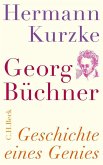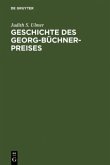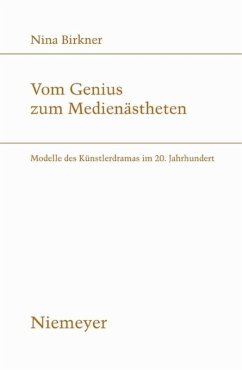Using exemplary historical scenarios, the present cultural history traces the transdisciplinary development of a psychosomatic discourse between the 18th and 20th centuries, thus closing a gap in research. The human being as a complete entity made up of body and soul is not only a topic for medicine, but is also of significance in literature and philosophy. The exchange processes between literature and knowledge are registered in concrete examples, and they demonstrate literature both as a cause of illness and a cure and as a method of representation and cognition.
Die vorliegende Kulturgeschichte zeichnet die transdisziplinäre Herausbildung des psycho-somatischen Diskurses seit dem 18. Jahrhundert nach und schließt damit eine Forschungslücke. Der 'ganze Mensch' ist nicht allein in der Medizin thematisch, sondern maßgeblich auch in Literatur und Philosophie. Diese Austauschprozesse zwischen Literatur und Wissen werden konkret erfasst, in ihnen erscheint die Literatur als Krankheitsursache und Heilmittel sowie als Darstellungs- und Erkenntnismethode.
Die historisch-systematische Argumentation der Studie gliedert den psychosomatischen Dis-kurs in fünf zentrale Elemente: 1. Der ganze Mensch als Analysegegenstand und Utopie wird bei Herder anschaulich. 2. Zeitkrankheiten zeigen sich in Moritz' Zeitschrift 'Gnothi sau-ton'. 3. Theatralisch-prosaische Kurmethoden werden bei Reil, Goethe, Novalis und Hegel verfolgt. 4. Die begriffsgeschichtliche Genese der Psychosomatik in der deutschen Psychiatrie des frühen 19. Jahrhunderts spiegelt sich in Büchners 'Woyzeck'. 5. Die biographische Erkenntnis als wissenschaftliche Methode, die Kranken- und Lebensgeschichte miteinander verbindet, wird in Fallgeschichten zu Nietzsche nachgezeichnet, von ihm selbst, Andreas-Salomé, Freud, Dilthey und Jaspers.
Die vorliegende Kulturgeschichte zeichnet die transdisziplinäre Herausbildung des psycho-somatischen Diskurses seit dem 18. Jahrhundert nach und schließt damit eine Forschungslücke. Der 'ganze Mensch' ist nicht allein in der Medizin thematisch, sondern maßgeblich auch in Literatur und Philosophie. Diese Austauschprozesse zwischen Literatur und Wissen werden konkret erfasst, in ihnen erscheint die Literatur als Krankheitsursache und Heilmittel sowie als Darstellungs- und Erkenntnismethode.
Die historisch-systematische Argumentation der Studie gliedert den psychosomatischen Dis-kurs in fünf zentrale Elemente: 1. Der ganze Mensch als Analysegegenstand und Utopie wird bei Herder anschaulich. 2. Zeitkrankheiten zeigen sich in Moritz' Zeitschrift 'Gnothi sau-ton'. 3. Theatralisch-prosaische Kurmethoden werden bei Reil, Goethe, Novalis und Hegel verfolgt. 4. Die begriffsgeschichtliche Genese der Psychosomatik in der deutschen Psychiatrie des frühen 19. Jahrhunderts spiegelt sich in Büchners 'Woyzeck'. 5. Die biographische Erkenntnis als wissenschaftliche Methode, die Kranken- und Lebensgeschichte miteinander verbindet, wird in Fallgeschichten zu Nietzsche nachgezeichnet, von ihm selbst, Andreas-Salomé, Freud, Dilthey und Jaspers.
"Das Glanzstück bildet die Interpretation von Georg Büchners Woyzeck. Schmaus analysiert das Fragment konsequent und überzeugend über seine Referenzen zur Psychiatrie [...], Physiologie, Ästhetik und literarischen Traditionen."
Horst Thomé in: Germanistik Redaktion 2011, Band 52, Heft 1-2
Horst Thomé in: Germanistik Redaktion 2011, Band 52, Heft 1-2








